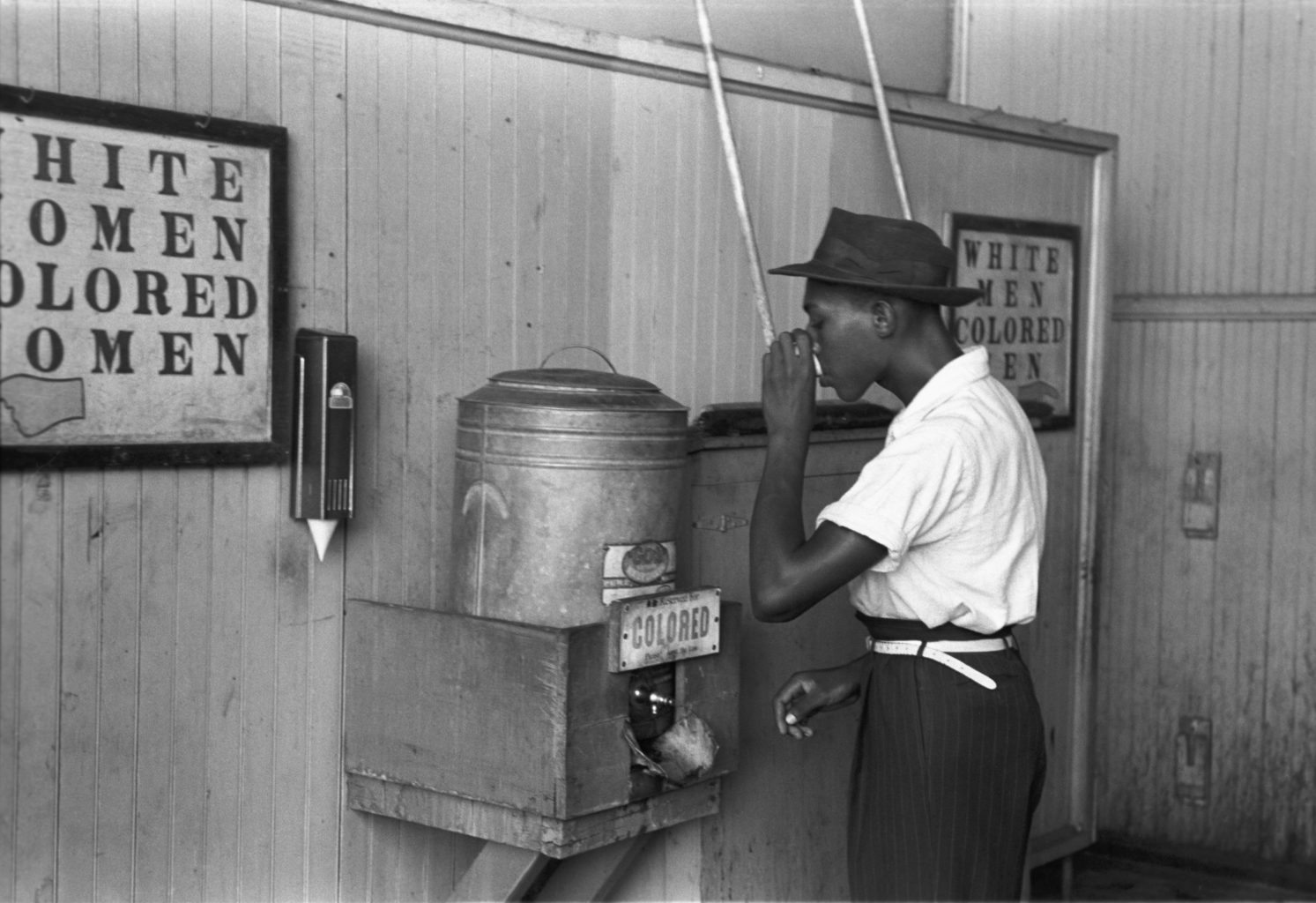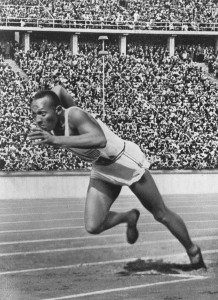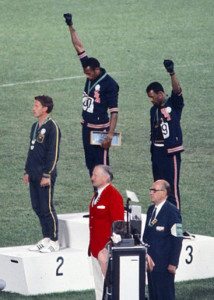Three to remember: Moments black athletes shook up the world
[dropcap]S[/dropcap]port at it’s best is transcendent. Outstanding performances and in some cases outstanding demonstrations after these performances, make the world sit up and take notice. You remember when they happened, you remember where you were. As we celebrate Black History Month, it’s important to commemorate the fact some of history’s definitive statements of black excellence have taken place in the sporting arena. We’ve seen records broken, perceptions changed, barriers shattered and adversity overcome by some courageous competitors down the years. It’s time to take a stroll down memory lane and look at three moments black athletes shattered societal convention and “shook up the world!” to quote the great Muhammad Ali.
[divider]
3 August 1936: Jesse Owens destroys Hitler’s “Aryan Supremacy” at the 1936 Olympic Games
Before Usain Bolt, before Carl Lewis, Jesse Owens was the original super athlete. His four gold medal haul at the Berlin Olympics in 1936 is often lauded as one of the greatest individual performances in the history of the modern games. No man has had to run so fast with so much riding on their each and every stride. Six months after Berlin won the right to host the biggest sporting showcase on earth, Adolf Hitler rose to power off the back of a wave of widespread post World War I German discontent. An integral part of the ideology he convinced his countrymen would help bring them out of diplomatic ruin was deeply rooted in prejudice- he believed “the master race” of Aryans were superior to the rest of the world in each and every way. The Berlin games were meant to be a showcase of German athletic dominance. That was until the fleet-footed American entered the Olympic stadium for the 100 metre final. With a glint in his eye he took to the starting blocks as Hitler looked on, before surging into the lead and bursting through the tape for the victory in a time of 10.3 seconds. In going on to collect three more gold medals not only did he completely destroy the notion of Aryan supremacy, he proved to his fellow Americans at home that the much maligned figure of the “negro” could be a national hero.
[divider]
16 October 1968: Tommie Smith and John Carlos’ Black Power Salute at the 1968 Olympic Games
If Owens’ protest against an anti-black Olympic establishment lay in the elegance of his strides, Tommie Smith and John Carlos took affirmative action one step further, creating arguably the most iconic image in sporting history. The visual of the pair standing atop the rostrum, medals slung round their necks, heads bowed, with their gloved fists raised towards the sky in parallel black power salutes will never be forgotten. In the most tumultuous year the Civil Rights struggle had ever seen, against the backdrop of Martin Luther King’s assassination and ensuing riots, the duo stood tall, embodying the stoicism and bravery of all their oppressed African American brethren pushing for change. As the anthem rung around the stadium, Smith’s world record winning gold medal performance and Carlos’ impressive bronze medal clinching run took a back seat. The salute wasn’t just a symbol of defiance in the face of a nation yet to free the descendants of former slaves from the shackles of segregation, it was a nod to the desperate living conditions of many of their compatriots. The pair stood on the podium without shoes in a nod to the poverty faced by blacks across America, whilst Carlos’ unzipped Olympic jacket was a daring break from Olympic protocol. A slap in the face of the IOC who refused to acknowledge their plight and were strictly against political demonstrations of any kind at the games.
[divider]
9 September 2001: Venus and Serena Williams battle it out for the first time in Primetime
https://www.youtube.com/watch?v=WuxRfyfPCXs
It’s 2001, Primetime CBS Television. The women’s singles final at the U.S. Open is about to commence, but this time there’s a different atmosphere, an electrifying sense of anticipation. Those in attendance and those watching at home knew they were seeing something special. With the lights shining their brightest and the world looking on, two African American sisters stepped out into a stadium aptly named after the legendary black tennis champion Arthur Ashe. Venus and Serena weren’t the first black trailblazers in the sport, Althea Gibson and Ashe, made inroads into a game that was a squeaky clean bastion of upper class country clubs, but they never well and truly dominated. The Williams sisters straight out of Compton with big strokes and otherworldly athleticism, reached the pinnacle and took the women’s game to a whole new level. This, the pair’s first ever clash in the final of a Grand Slam tournament was a landmark, a sight to behold in the modern game, proof that the aura of exclusivity surrounding tennis could be overturned. They wouldn’t just overturn the establishment once however, they would do it again and again- duelling across the globe for some of tennis’ biggest titles for the next 14 years. Even today, Venus and Serena are still filling arenas and capturing the public imagination, their combined tally of 28 Grand Slam titles has seen the duo leave an indelible mark on tennis and pave the way for generations to come.




Comments